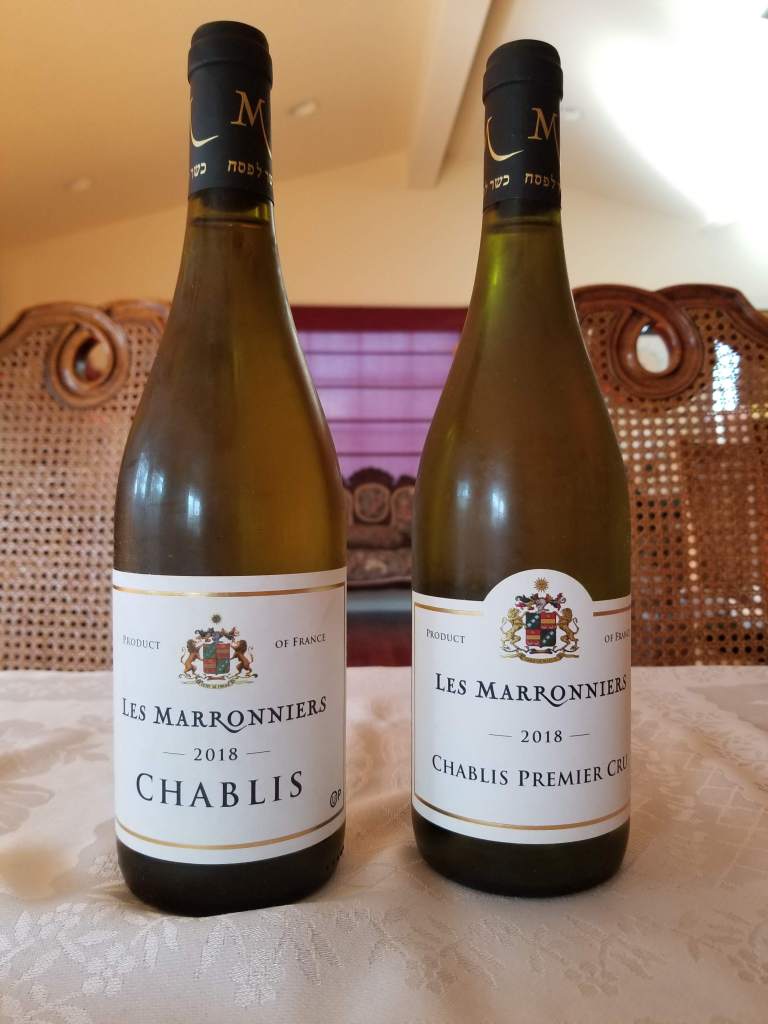Blog Archives
Blind tasting in Paris (Part #1) – Nov 2022
As stated in my previous post, I was in Paris in November, with Avi Davidowitz from Kosher Wine Unfiltered. The sheer number of boxes in our room was insane, somewhere nearly 120 bottles of wine came to our hotel or to Ari Cohen’s home. The poor bellman pushing that cart laden with wine boxes was a site to see.
We were in Paris for a week and during that time Avi and I had three organized tastings with Bokobsa, Royal Wine, and IDS. We also tasted some 80+ wines in the hotel room, blindly, in 5 rounds, each time following the methodology defined below. This post will showcase the wines we had in rounds 1 and 2.
Blind Tasting Methodology



Thankfully, my posts can stop referencing COVID and focus on wine. So, let us get to the process. This time I wanted to break up the normal approach, or taste wines from the distributor or wine producers and instead taste the wines blind in their respective groups. The methodology was simple, bag all the wines, hand them to Avi who wrote a number/letter, and then line them up for the tasting. Then we taste them in numerical/alphabetical order and write the notes. After the first pass, we taste the wines again to see if they have changed. Then we show the wines and write the names down. We did find a few anomalies in the system. First, the more closed wines needed time to open and those were tasted again later. If there were flaws at the start those stayed in the notes, at least for me, and if there were issues after they were also written.
White wines and Sparkling Wines (First Round)
There were a few shockers, in this round, the shockers were all for the bad! Sadly, this round and the subsequent one with simple red wines were underwhelming to deeply disappointing. There were TWO WINNERs in the first TWO rounds and they were repeat WINNERs from previous tastings I had with Avi last year in November 2021 and with Nathan Grandjean in 2017. I have also included a wine I tasted TWICE over the past month or so, the 2016 Yarden Rose, Brut, it is underwhelming, much akin to its brother the 2016 Yarden Blanc de Blancs. Both are underwhelming and very sad as this is the first time that I ever had a Yarden Sparkling wine I did not like on release. Very sad indeed! If you want sparkling wines stick to Drappier, Laurent Perrier, Gilgal, and others.
The other disappointing wine was the highly anticipated 2020 Chateau Olivier Blanc, sadly it did not live up to expectations. At the start it was horrible flat peach juice, if you read my original blind tasting – it went like this, “This wine is cooked peach juice, flat and useless. Drink never.” Literally. The wine evolved over three days! The same thing could be said for the 2020 Chateau Olivier red and the famous 2020 Carillon d’Angelus Saint-Emilion. Though the reds wines were less flat and more closed tightly.
Other than the lone WINNER and the disappointing 2020 Chateau Olivier Blanc, there were no wines that were very interesting at all. There were a few new ones, like the 2020 Les Vins de Vienne Saint-Peray, Les Bialeres, disappointing, and lacked acidity and balance. The 2021 Casa E.di Mirafiore Roero Arneis DOCG was also a dud, both white and red. Overall, nothing very good here, but hey my pain is your gain!
2020 Vintage versus 2021 Vintage in Bordeaux
I will repeat what I wrote previously, as this post will showcase far more 2021 wines from Bordeaux. So far, the sample size of 2021 wines from Bordeaux includes very few big names because they are still in the barrels. Or should be! So, the sample size of 2021 wines from Bordeaux is all simpler and of lower starting quality. Still, what is apparent, from this sample size, is that 2021 will be a very hard year. The 2020 vintage, by contrast, is hit and miss, and so far, while the hits have been solid, there are no home runs, and we have tasted most of the wines we expect to rave about from the 2020 vintage. There will be one 95-scoring wine, ONE, from all the wines we tasted on this trip. I expect even fewer exceptional wines from the 2021 vintage and I personally, will be buying far fewer of the 2020 or 2021 wines. Finally, the wine notes from the 2020 vintage should be witness to the fact that while the 2020 wines are OK to good, they are far more accessible than previous vintages. The glaring exception to that will be highlighted in a subsequent post.
Read the rest of this entryAnother round of QPR (Quality to Price Ratio) Hits and Misses, Seven QPR WINNERS – August 2022
OK, with all the Paris wine notes posted, the latest roses posted, and Herzog’s wonderful wines, I am finally at the finish line. This last batch of notes catches me up just in time before the next round of wines shows up. As usual, my QPR posts are a hodgepodge of wines but thankfully we have some nice QPR (Quality to Price Ratio) wines.
QPR (Quality to Price Ratio) Wines
It has been two months since my last QPR (Quality to Price Ratio) post and many people have been emailing me about some unique wines I have tasted and some lovely wines that are worth writing about.
Thankfully, no matter how much garbage and pain I subject myself to, we are still blessed with quite a few wonderful QPR wines out there. This post includes some nice wines and some OK wines with the usual majority of uninteresting to bad wines.
The story of 2021 Israel whites and roses is very unfortunate, it started with a bang. Matar and a couple of others showed very well. Sadly, after that, every other white and rose wine from Israel was not as impressive. They all show middling work and product, very disappointing indeed. Thankfully, this round has three Israeli WINNERS and two from the 2021 vintage. There is an 8th WINNER here but it is here for documentation purposes and not for advice on what to buy, as it is not available anymore. That being the 2012 Chateau Serilhan.
We have a nice list of QPR WINNERS:
- 2012 Chateau Serilhan Cru Bourgeois, Saint-Estephe (Posted as I have never posted this yet, strange)
- 2021 O’Dwyers Creek Sauvignon Blanc, Marlborough – A perennial WINNER
- 2021 Castel La Vie Blanc Du Castel, Judean Hills – Finally a 100% Sauvignon Blanc and it is lovely!
- 2021 Sheldrake Point Riesling, Dry, Finger Lakes, NY – A lovely 2nd vintage
- 2021 Sheldrake Point Gewurztraminer, Finger Lakes, NY – Another lovely 2nd vintage as well
- 2021 Golan Heights Winery, Yarden Sauvignon Blanc, Galilee – A nice wine
- 2019 Netofa Latour, Red, Galilee
- 2020 Terra di Seta Chianti Classico, Chianti Classico – Perenial winner
There were also a few wines that are a slight step behind with a GREAT or GOOD QPR score:
- 2021 Cape Jewel Chenin Blanc, Reserve Collection – one of two wines that shocked me as I expected PAIN
- 2021 Unorthodox Sauvignon Blanc, Paarl – the 2nd shocking wine in this tasting
- 2020 Dalton Sauvignon Blanc, Reserve, Galilee
- 2021 Golan Heights Winery Sauvignon Blanc, Gilgal – not as good as his bigger brother
- 2021 O’Dwyers Creek Chardonnay, Marlborough
- 2021 Capcanes Peraj Petita, Montsant – one of the best Petita since 2015, still not a WINNER like in 2015
There are a few wines that got a QPR Score of EVEN – meaning expensive or average:
- 2021 Vitkin Israeli Journey, White, Israel
- 2021 Gush Etzion Gewürztraminer, Judean Hills
- 2021 Yaffo White, Judean Hills
- 2019 Ramon Cardova Rioja, Rioja
- 2020 Capcanes Peraj Ha’abib, Montsant – nothing interesting but better than previous vintages
- 2020 Domaine du Castel Lavie, Rouge du Castel, Jerusalem Hills
- 2016 Vitkin Cabernet Franc, Galilee – Drink up!
- 2018 Vitkin Carignan, Judean Hills – Drink up!
The others are essentially either OK wines that are too expensive, duds, or total failures:
- 2016 Vitkin Shorashim, Israel – a nice enough wine but the price is crazy
- 2020 Flam Cabernet Sauvignon, Reserve, Galilee
- 2020 De La Rosa Taryag Gruner Veltliner, Burgenland
- 2020 De La Rosa Chai 18 White Welsch Riesling, Burgenland
- 2021 Unorthodox Chenin Blanc, Coastal Region
- 2021 J. De Villebois Pouilly Fume, Loire Valley – so sad after last year’s lovely vintage
- 2021 Odem Mountain Chardonnay, Volcanic, Galilee
- 2016 Laufer Cabernet Sauvignon, Special Reserve, California – ripe oak juice
- 2021 Golan Heights Winery Mount Hermon White, Galilee
Some things that made me stand up and take notice (AKA QPR WINNERS):
The real WINNER here, from the entire list, is the 2012 Chateau Serilhan Cru Bourgeois, Saint-Estephe (posted as I have never posted this yet, for some strange reason), but of the available wines that would be the 2021 O’Dwyers Creek Sauvignon Blanc, Marlborough. The 2020 O’Dwyers Creek Sauvignon Blanc, Marlborough ran out very quickly, I guess that there was not much available or made, as it was right at the start of COVID! The crazy story of how it all came together.
So happy to see Castel finally dropped the Gewurztraminer from their La Vie Blanc Du Castel the solo Sauvignon Blanc is lovely!
Talking about Gewurztraminer, the 2021 Sheldrake Point Riesling and Gewurztraminer from the Finger Lakes shows one can make lovely and reasonably priced wines from the Finger lakes. Bravo Ari!
Nice to see a Yarden wine on this list again, other than the LOVELY sparkling wines, the 2021 Golan Heights Winery, Yarden Sauvignon Blanc hit on all marks.
The last two wines are red and while I loved the 2019 Netofa Latour, Red at the start, it seemed to fall off a bit and that is unfortunate. Finally the 2020 Terra di Seta Chianti Classico, Chianti Classico is not as good as the 2019 vintage but still a solid wine.
Other wines of note (AKA QPR GREAT or GOOD):
The fascinating wines from this list were the South African wines, the 2021 Cape Jewel Chenin Blanc, Reserve Collection, and the 2021 Unorthodox Sauvignon Blanc, Paarl. I had zero expectations for these wines, so they were a nice find.
The rest are just good enough wines, mostly well priced but not interesting to drink.
Wines that are either good but too expensive or average (AKA EVEN):
This list is also boring, the only real wine to call out, is the 2020 Capcanes Peraj Ha’abib, Montsant, nothing interesting but better than previous vintages. The same for the Peraj Petita in the category above.
The rest of the wines are not interesting to me and are on this list because of either quality or price.
Wines that are either OK but far too expensive or bad wines (AKA POOR/BAD):
Like on previous versions of these lists there will always be a nice scoring wine that is so expensive it falls into this QPR list. That would be the 2016 Vitkin Shorashim, Israel – a nice enough wine but the price is crazy.
There are also, many duds to losers and I will just leave you to peruse the names and scores down below.
Roundup
Overall another nice list of QPR WINNERS and some GREAT options as well. I can always look at these kinds of lists and say there are only 7 or 8 wines I would want to buy from this entire list, but that would be a defeatist attitude. The correct way to classify this list is we have 7 or 8 more wines available to us and in the end, as I have stated many times now, I cannot buy all the WINNER wines even if I wanted to. There are just too many good wines out there and that is what we should be focused on!
The wine notes follow below – the explanation of my “scores” can be found here and the explanation for QPR scores can be found here:
Older Wines that I have not posted (or revising):

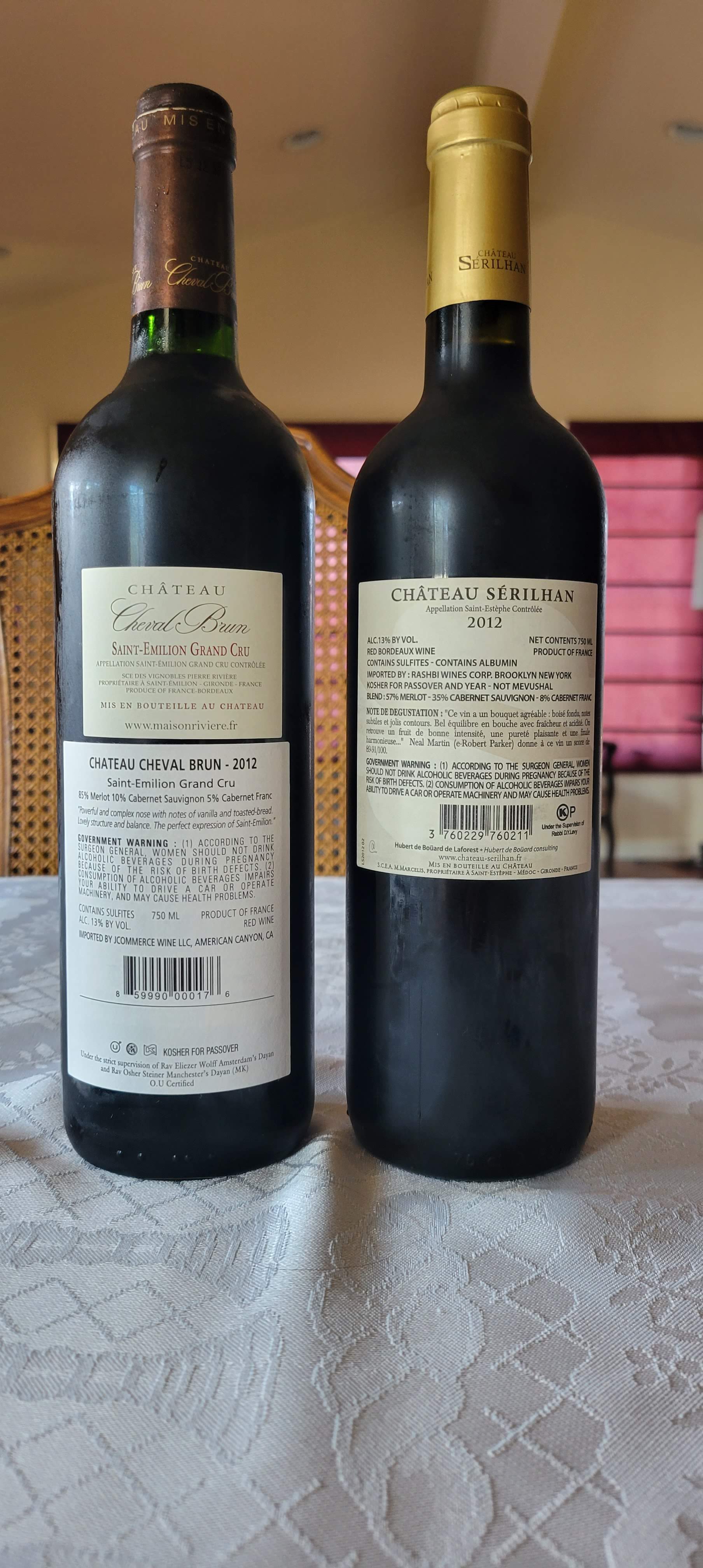
2012 Chateau Serilhan Cru Bourgeois, Saint-Estephe – Score: 93+ (QPR: WINNER)
This wine is a blend of 57% Merlot, 35% Cabernet Sauvignon, and 8% Cabernet Franc, The nose of this wine is lovely, deeply mineral-driven, with intense rock, graphite, charcoal, ripe black fruit, balancing tart raspberry, red plum, sweet spices, and sweet oak.
The mouth of this medium-plus bodied wine is rich, layered, and well-balanced with great acidity, freshly tilled earth, mineral, smoke, hints of barnyard, mushroom, and truffle, followed by ripe blackberry, plum, dark tart raspberry, smoke, and beautiful fresh wine approach – bravo!
The finish is long, dark, green, ripe, but well balanced, with smoke, tobacco, dark chocolate, and lovely mushroom, with tertiary notes soon approaching. This wine was opened too early, such is life, still very lovely and a wine I would open again in 4 years. Drink until 2029. (tasted July 2022) (in San Jose, CA) (ABV = 13%)
2012 Chateau Cheval Brun, Saint-Emilion Grand Cru – Score: 91+ (QPR: GOOD)
This wine is a blend of 85% Merlot, 10% Cabernet Sauvignon, and 5% Cabernet Franc.
The nose of this wine is another giant Brett bomb, with crazy mushrooms, rich green notes, earth, red fruit, smoke, and nice tar. The mouth of this wine is layered, ripe, and lovely, with nice elegance, showing blackberry, raspberry, mineral galore, graphite, earth, mushroom, and forest floor, The wine’s extraction has calmed down but the Brett and barnyard are in full gear.
The finish is long and earthy, with mushroom, barnyard notes, rich tobacco, and tar. Bravo! Drink till 2025, maybe longer. (tasted July 2022) (in San Jose, CA) (ABV = 13%)
A few good red wines along with too many misses – Jan/Feb 2022 Tasting
This is my second QPR (Quality to Price Ratio) WINNER Hit and Miss post of 2022 and while this started in January as a poor showing, I had two more wines in February that made the overall post much better. We started with one QPR WINNER and that grew to three WINNER by February. Still, the star of the show was the first QPR WINNER, the 2016 Terra di Seta Chianti Classico, Assai, Gran Selezione, Chianti Classico!
This post is filled with many more examples of what people are raving about from Israel, the 2018 red vintage, and all I can say is, yes they are not date juice! They are not uncontrolled madness, they are OK, they lack acidity and mostly they are copy and paste of each other with different fruit. Still, an improvement over other vintages. Essentially, much like the 2016 vintage, another highly vaunted vintage, which I described to my buddy EA as: “milk chocolate, either blue or black fruit, loads of cedar and tobacco – copy and paste wines”.
I wish it was better, even when God forces a winery to make good wine by keeping the temperatures at bay, they still make mediocre stuff. Such is life! Thankfully, we are blessed with Terra di Seta, aka TDS, which won my first ever winery of the year in 2019 and a winery that I have been touting for many years now! The newly released 2016 Terra di Seta Chianti Classico, Assai, Gran Selezione, is a stunning wine and maybe their best Assai so far!
The next two QPR WINNER are the 2019 Herzog Winery Cellars Cabernet Sauvignon, Alexander Valley, and the 2020 Chateau Signac Pliocene, Cotes du Rhone. I must say, the 2019 Herzog is shockingly ripe but the level of acidity it has really helped to tamp down the fruit and with time they all work together to make a harmonious wine. Still, it is ripe to start so leave this wine alone for many years. The 2020 Chateau Signac Pliocene, on the other hand, is lovely and ready to go. It is NOT as ripe as the 2018 vintage, but it is nice and very enjoyable for the next few years.
Finally, there is a repeat tasting of the 2019 Pavillon du Vieux Chantre, Puisseguin Saint-Emilion. As I stated in the Moises Taieb post, I needed to taste a few wines a second time and I am happy I did. The 2019 Pavillon du Vieux Chantre showed beautifully and just as I expected it to, after having tasted all the previous vintages. Thankfully, this wine is available in the USA in an easy-to-find location, from Andrew Breskin and Liquid Kosher.
The rest are OK, QPR score-wise, with only one wine garnering a score of GREAT, which is the 2017 Ma’ayan Asis Blend, these are relabeled wines from Tom Winery. The Tzora was nice but overpriced for what it gives.
I also tasted three 2019 Pinot Noirs and the clear winner, of those three, was the 2019 Goose Bay Pinot Noir, Small Batch. It is a lovely wine and one to enjoy over the next couple of years.
The wine notes follow below – the explanation of my “scores” can be found here and the explanation for QPR scores can be found here:



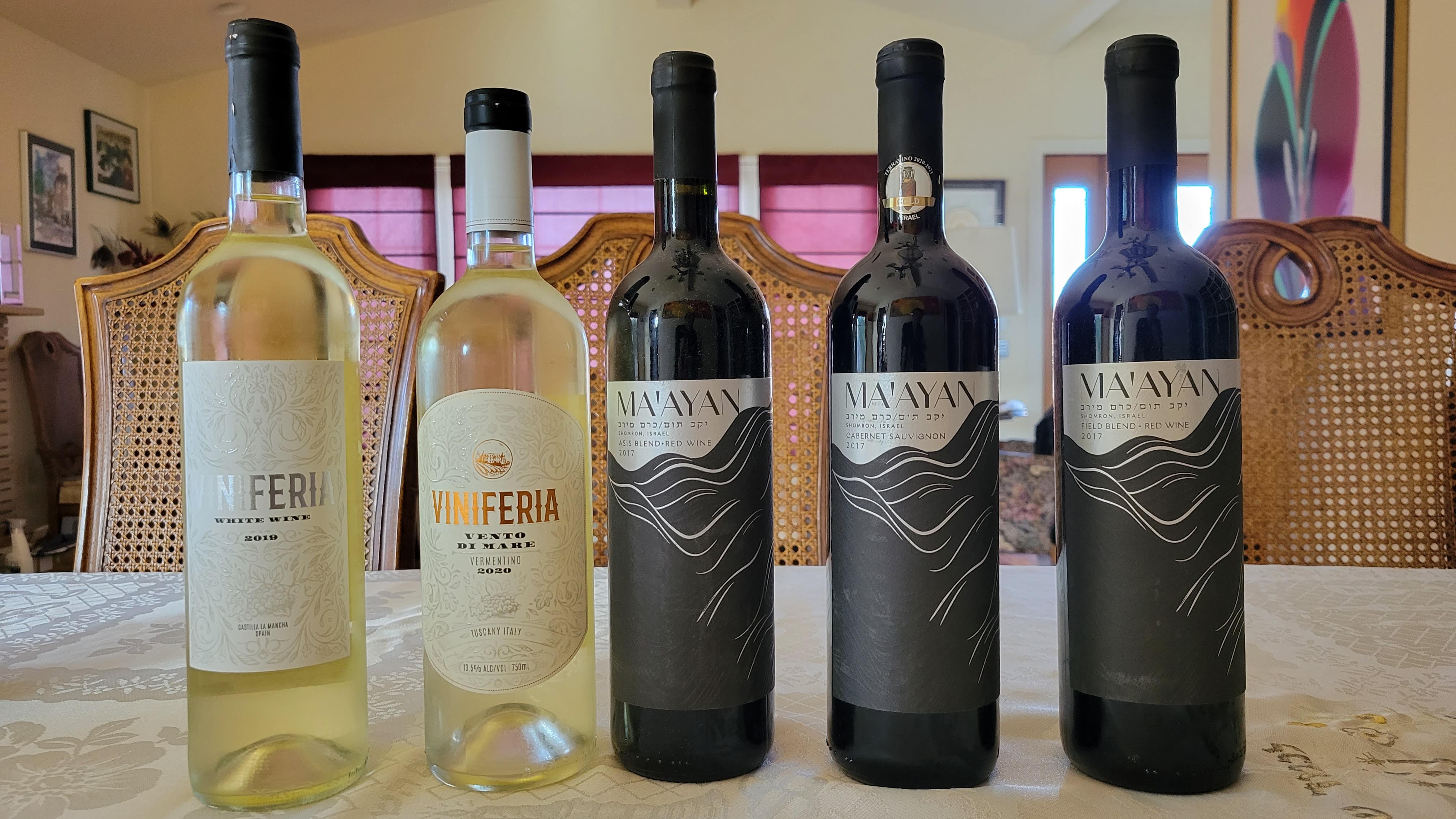
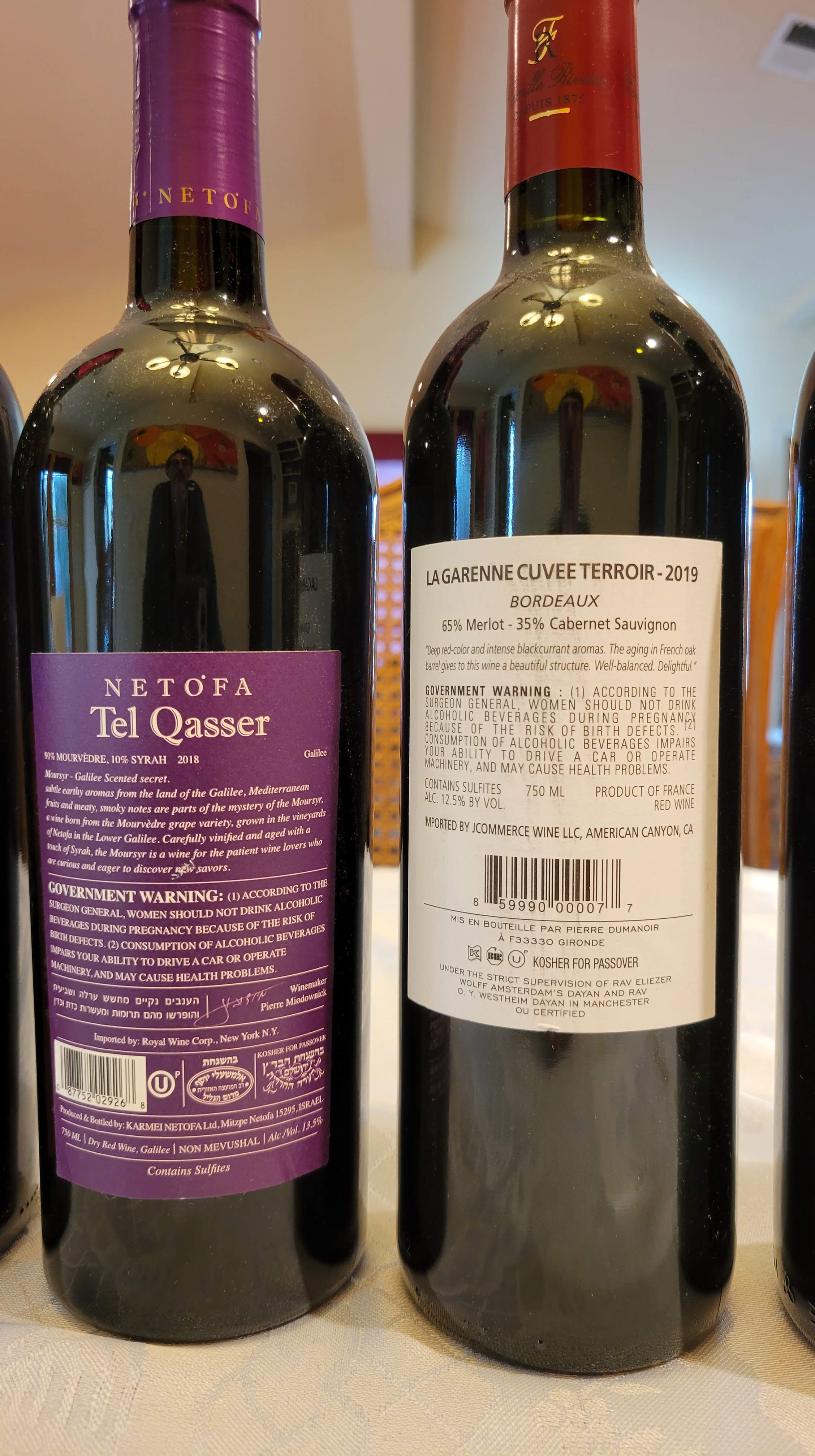
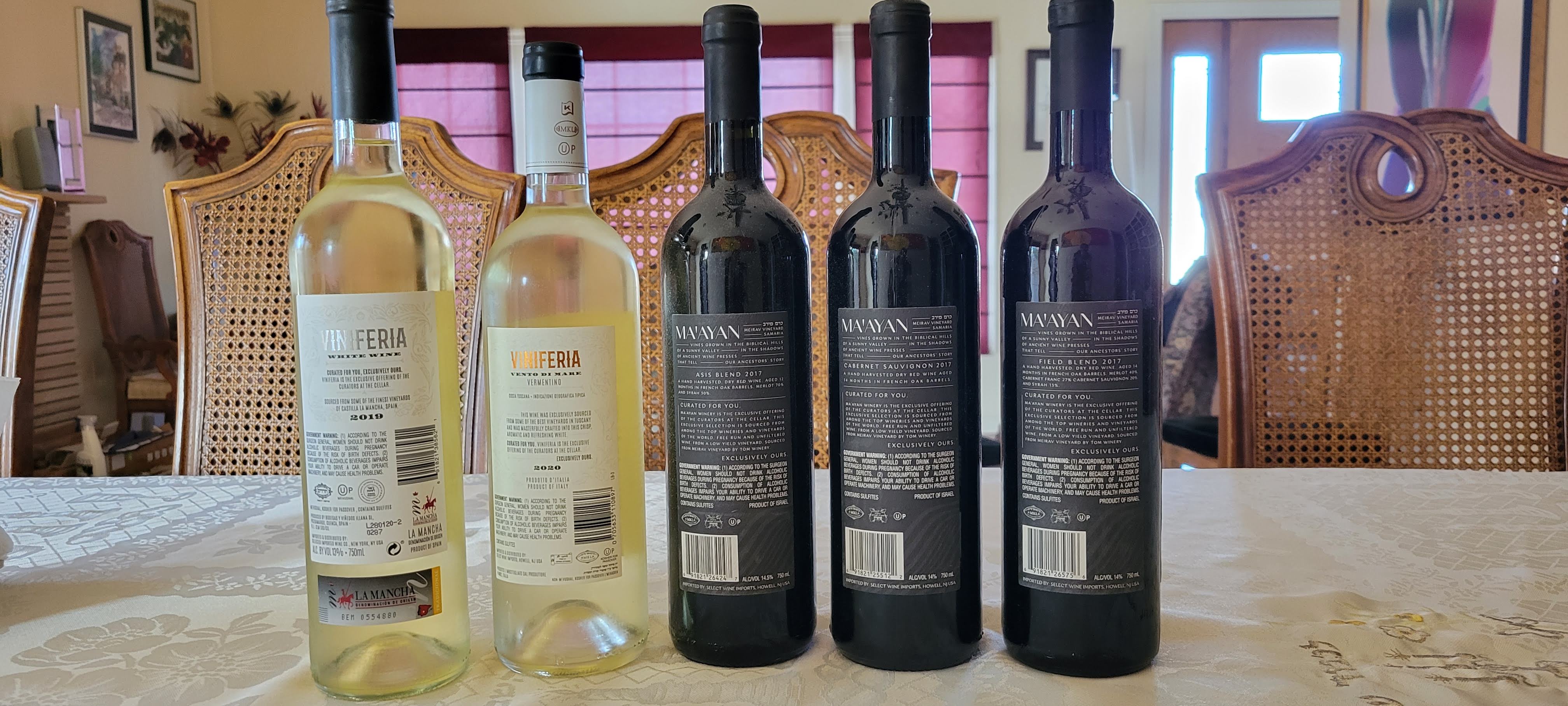
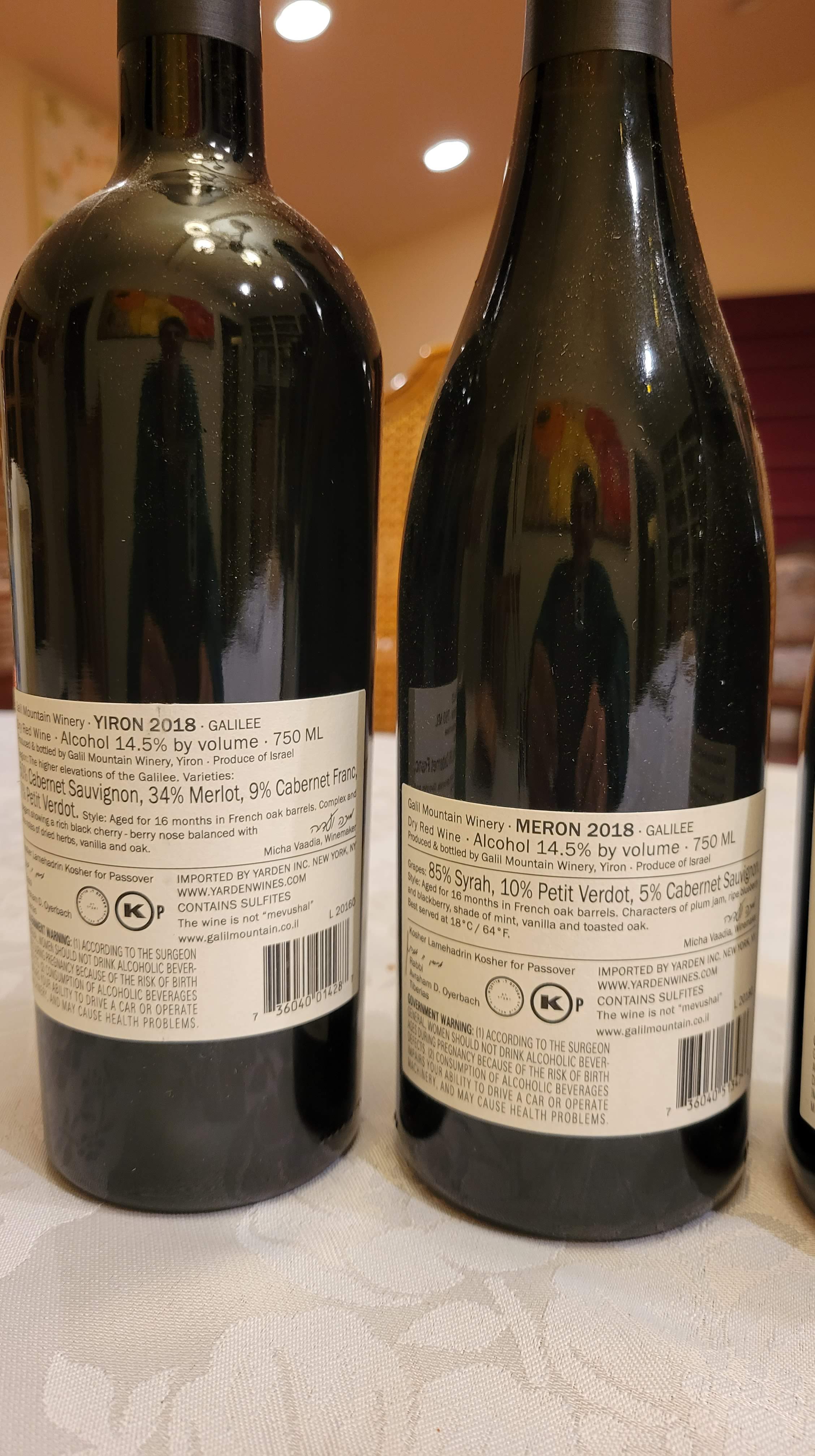
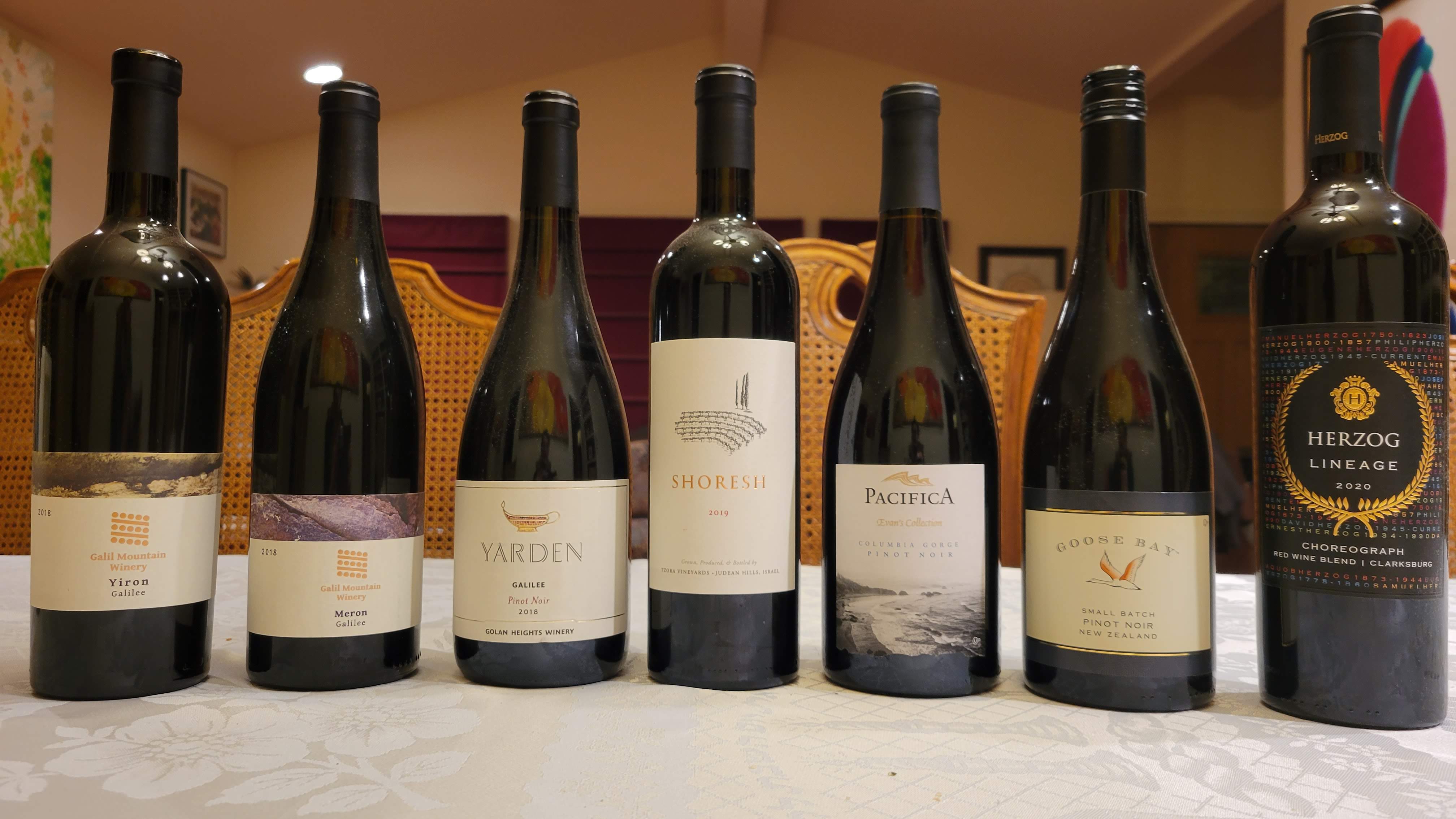
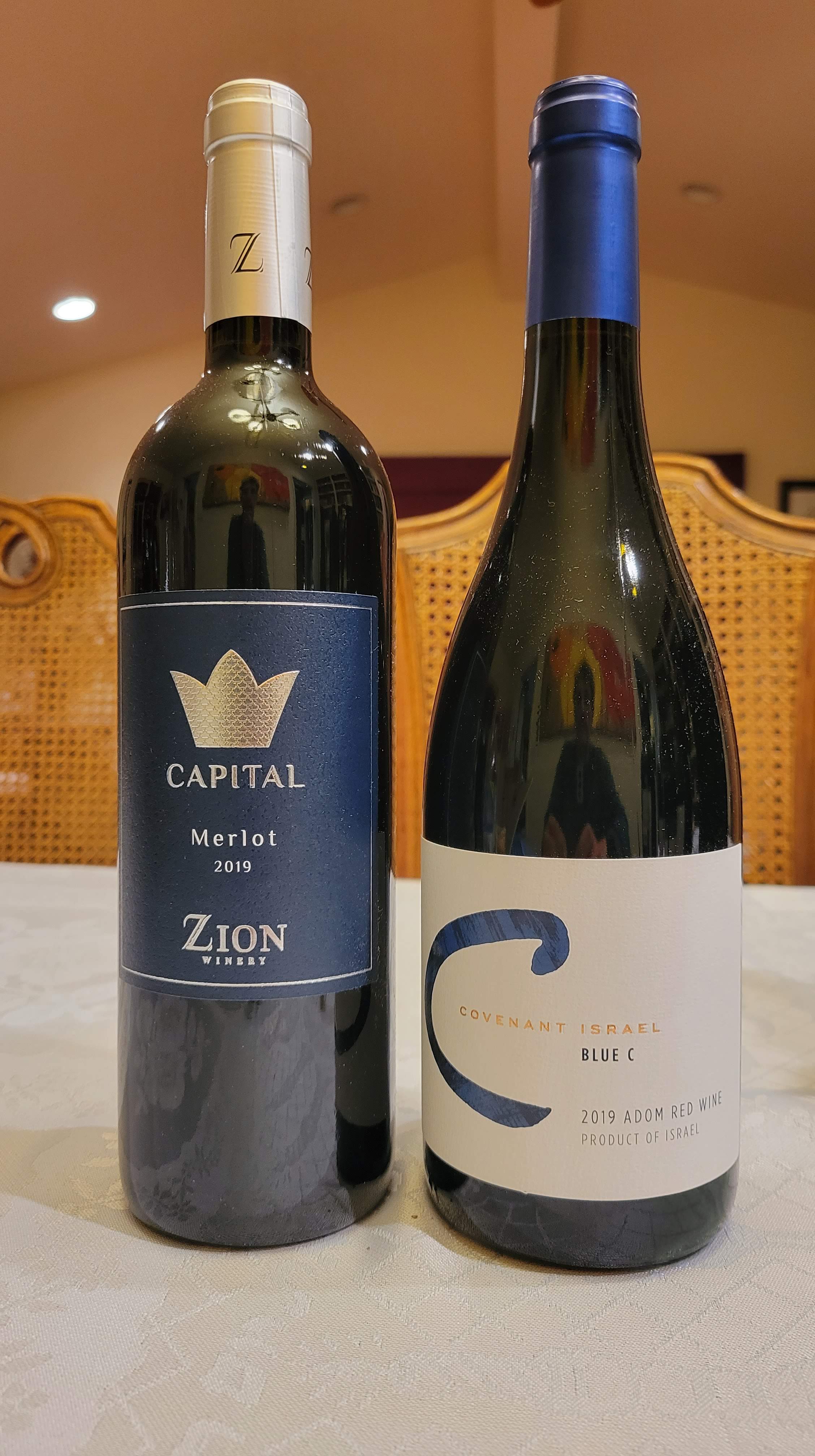
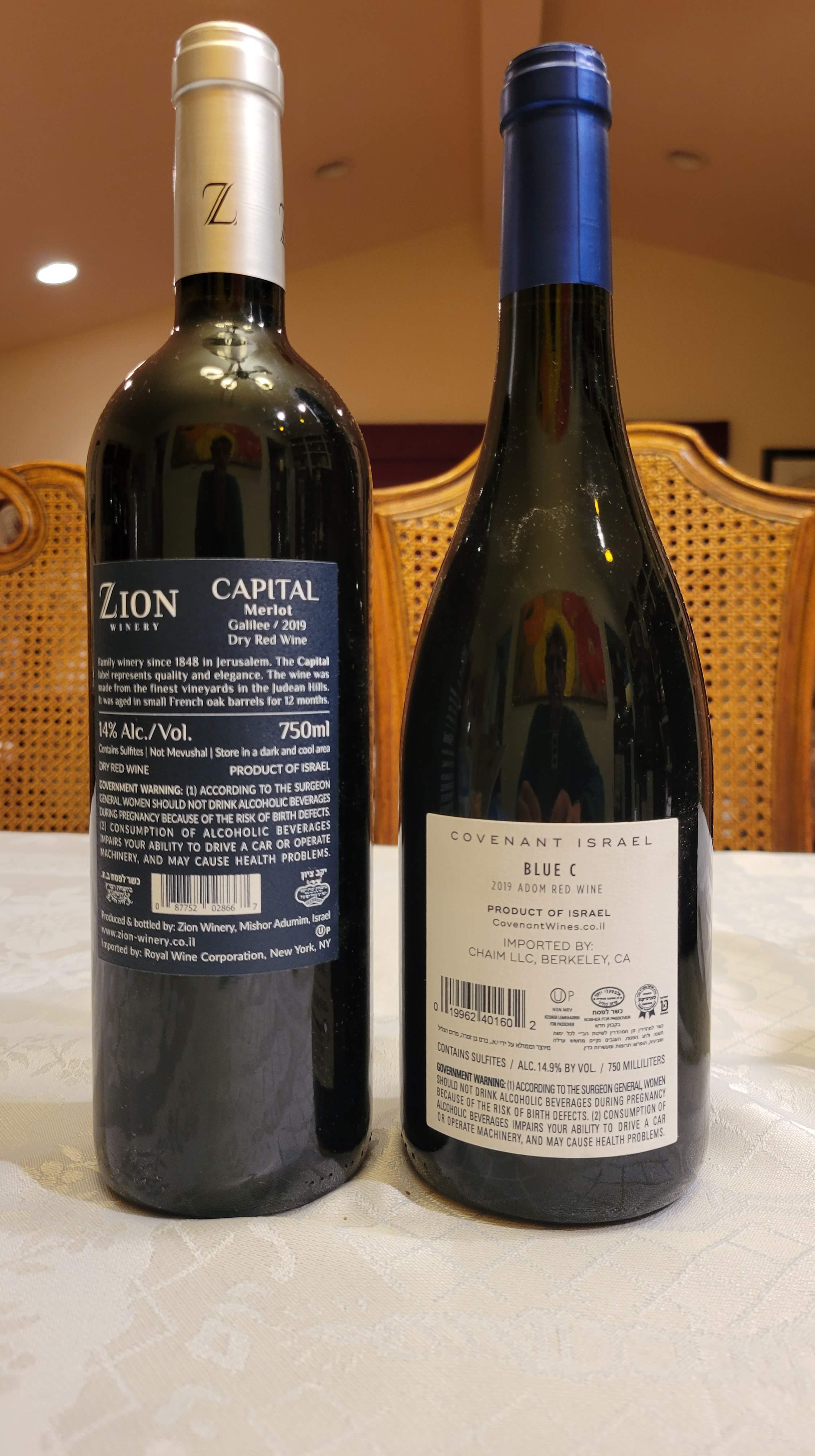
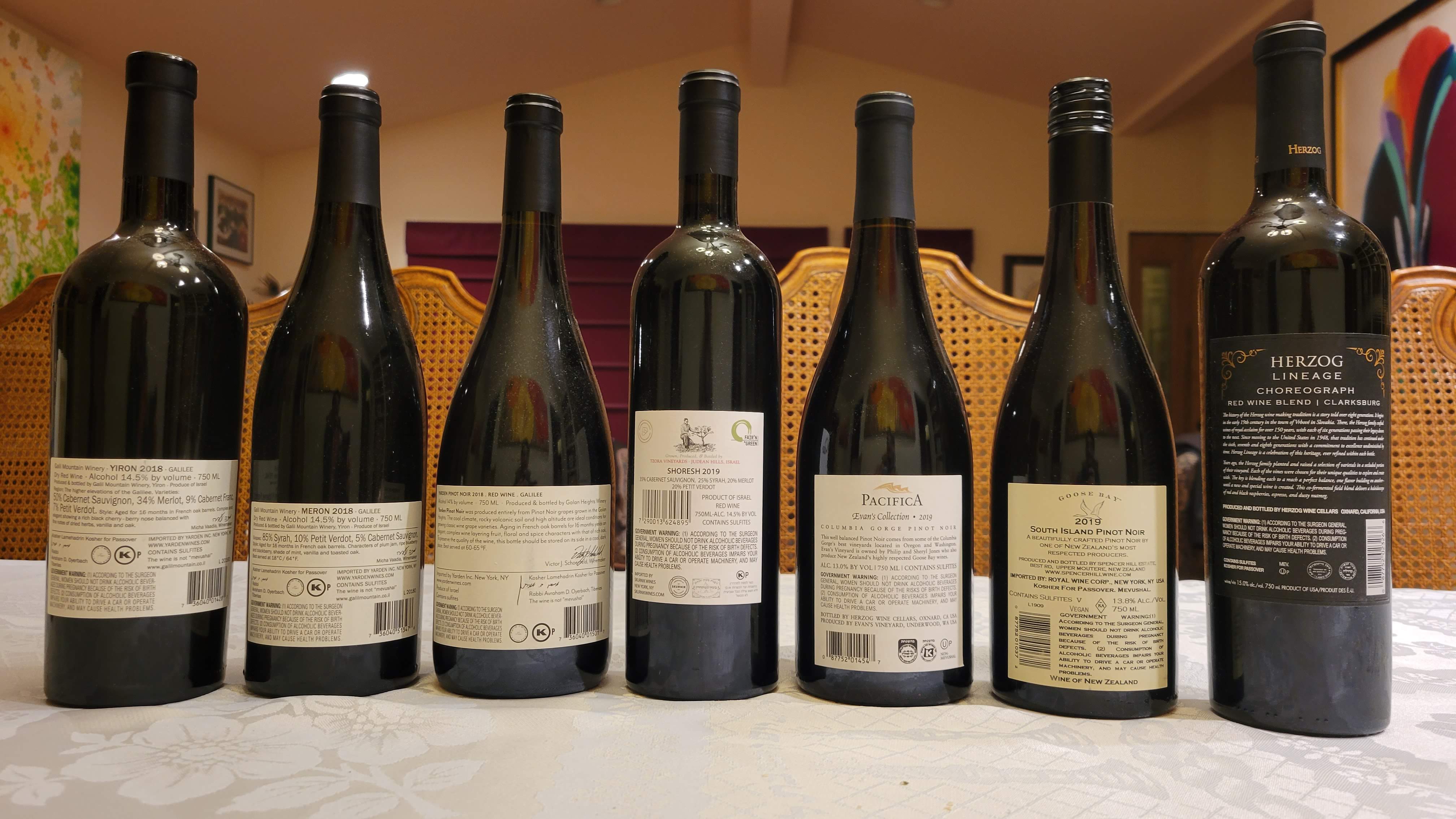

2016 Terra di Seta Chianti Classico, Assai, Gran Selezione, Chianti Classico – Score: 93.5 (QPR: WINNER)
This vintage of Assai is its best and this wine is 100% Glorious, rich, elegant, focused, balanced, fruity, but tart, refreshing and concentrated – WOW! BRAVO!!! The nose on this wine is pure heaven, it is soy sauce, funk, forest floor, mushroom, fruity, red and black fruit, tar, smoke, violet, very floral, wild herbs, and rich mineral. The mouth on this medium to full-bodied wine is ripe, concentrated, but well-controlled, with ripe plum, dark strawberry, candied raspberry compote, with menthol, licorice, baking spices, all wrapped in dense sweet oak and elegant draping tannins, just incredible! The finish is long, dense, dark, rich, layered, concentrated, yet perfectly balanced, with screaming acidity, rich espresso coffee, mushrooms, almost truffle, forest floor, mineral, charcoal, graphite, and star anise. WOW!!! Drink from 2026 until 2033. BRAVO!!! (tasted January 2022) (in San Jose, CA) (ABV = 15%)
My top 25 kosher wines of 2020 including Wine of the Year, Winery of the Year, and the best Wine of the Year awards
Like last year, I wanted to make this post short and sweet – so the criteria are simple. I could care less about price, color, or where it was made. All that matters is that it is/was available this year sometime to the public at large and that I tasted it in a reliable environment, not just at a tasting, and that it was scored a 92 or higher. Also, there are a few lower scoring wines here because of their uniqueness or really good QPR.
We are returning with the “wine of the year”, “best wine of the year” along with categories I added last year, “Winery of the Year”, “Best White wine of the year”. Wine of the year goes to a wine that distinguished itself in ways that are beyond the normal. It needs to be a wine that is easily available, incredible in style and flavor, and it needs to be reasonable in price. It may be the QPR wine of the year or sometimes it will be a wine that so distinguished itself for other reasons. The wines of the year are a type of wine that is severely unappreciated, though ones that have had a crazy renaissance, over the past two years. The Best Wine of the year goes to a wine well worthy of the title.
This past year, I think I am pretty sure about my state on kosher wine overall. In the past, I had not yet tasted the pape Clement or other such wines. However, over the past year, those have been covered, and they were a serious letdown. As stated in the article, I truly believe the entire kosher production of the Megrez wines, following the EPIC 2014 vintage of the Pape Clement and others, to be below quality and seriously overpriced, and without value in every category, which is a true shame. The 2015 reds are all poor quality and the whites are not much better, in 2015 and 2016. The 2016 Pape Clement, while better, is a total ripoff for what it is. As I will talk about in my year in review post, 2014 will come out as the best vintage for the past decade in France. That is a hotly debated subject, but IMHO, in the world of kosher wine, there were FAR more best wine options in the 2014 vintage than any other vintage in the past decade. That may not be the case for non-kosher wines, but news flash, I do not drink non-kosher wines, or even taste them, and further this blog is about kosher wines. The 2018 vintage may well have some serious “best wine of the year” candidates, but sadly, not all of those wines are here and I could not travel to France to taste them all, as I do commonly.
There are also interesting wines below the wines of the year, think of them as runner-up wines of the year. There will be no rose wines on the list this year. If last year, I thought the roses were pure junk, this year, you can add another nail in the coffin of rose wines, IMHO. Thankfully, the task of culling the bounty of great wines to come to these top wines was more a task of removing then adding. We are blessed with a bounty of good wines – just not like a few years ago when that bounty included many 95 and 95+ scoring wines.
The supreme bounty comes from the fact that Royal released the 2018 French wines a bit early! Throw in the incredible number of kosher European wines that are coming to the USA and being sold in Europe and this was truly a year of bounty for European kosher wines.
Now, separately, I love red wines, but white wines – done correctly, are a whole other story! Sadly, in regards to whites, we had no new wines from Germany, still. Thankfully, we have some awesome new entries, from the 2017 and 2018 Dampt Freres Chablis, both Grand Cru and Premier Cru, and the new 2019 Meursault!
The wines on the list this year are all available here in the USA, in Europe, and a few can be found in Israel, as well.
Finally, some of these wines are hard to find and they may have different siblings – but they are worth the effort. The wine notes follow below – the explanation of my “scores” can be found here:
The 2020 kosher wine of the year – is a return to its greatness – the 2018 Elvi Wines EL26
Elvi EL26 is back! Back to the glory days and I have stocked up and sadly, it will sell out quickly, if it is not already sold out! Get a move on, there was not a huge production of this beauty!
So, why did EL26 win? Simple, it is a great wine, and then throw in its WINNER price, and this wine punches at two levels, at the same time! You can read more about this fantastic wine here, in my post about it. Enjoy!
2018 Elvi Wines EL26, Elite, Priorat – Score: 93 (QPR: WINNER)
This wine is a blend of 80% Garnacha (Grenache) and 20% Carignan. This wine is pure heaven, dirt, smoke, roasted animal, saline, mineral, juicy tart red, and blue fruit, with incredible precision and fruit focus – Bravo!
The nose on this wine is pure fun, showing tart red fruit, incredible fresh loam, and dirt, hints of mushroom, licorice, roasted animal, a whiff of oak, sage, rosemary, with dirt, and green notes. This wine is currently far more Bordeaux in style than that of a Spanish Priorat! The mouth on this medium-bodied wine is not overly extracted, but it is well extracted, with good mouth and fruit texture, with incredible acid, good fruit focus, showing dark cherry, plum, ripe and tart raspberry, strawberry, oak, vanilla, and garrigue, with green notes, and lovely mouth-draping tannin. The finish is long, green, yet ripe, with great control and precision, with lovely graphite, more roasted meat, scraping minerality, saline, rich smoking tobacco, and smoke, lots of char and smoke. Bravo! With time the wine opens more and shows its riper side, still very controlled, but the fun red and blue fruit become a bit fuller and richer in the mouth – quite an impressive wine! Drink from 2026 until 2036. (tasted December 2020)
Kosher Sparkling wines for the end of 2020 – WINNERS from Drappier and Yarden
With 2020 coming to a close, I am posting the top sparkling wines, but to be clear, I drink sparkling wine all year round! We have been blessed recently with Yarden selling their Gilgal Sparkling wine for under 20 dollars a bottle! Honestly, there is no better deal out there and that is why they were the wines of the year last year! Yarden continues to impress with their 2014 entries and they are the sparkling wine producers to beat, for anyone entering this market.
How is Sparkling wine made?
There are many options – but the vast majority of sparkling wines fall into three categories:
- Le Méthode Champenoise (Méthode Traditionnelle)
- Methode Ancestrale
- The Charmat Method
Le Méthode Champenoise (Méthode Traditionnelle)
So, what is Champagne and how do we get all those cool bubbles? Well, it all starts with a grape of some sort, in most cases, Chardonnay, but we will get back to the other varietals further down. For now, like all wine on planet earth, Champagne starts with a grape. It is picked (often early to lower alcohol and increase acidity), then crushed, pressed, and allowed/encouraged to go through primary fermentation, exactly like all white wines on planet earth. At this point, most houses ferment the base wine in metal tanks or barrels. Some still use wood, but they are the minority.
Of course, like much of France (Bordeaux, Burgundy, Champagne), especially in Champagne, the wine can be chaptalized after racking, until an 11% ABV. Now before the heat waves that have covered much of this earth (call it what you wish), Bordeaux and Champagne prayed to hit their desired mark of ABV, and therefore they used to add sugar to bring up the ripeness on their fruit. Nowadays, Champagne is picking earlier and earlier, and Chaptalization is not a common thing anymore, as mother nature is taking care of the fruit’s ripeness all on her own!
Once the wine has been fermented the next question arises, should they let the base wine go through a wine’s second natural fermentation called Malolactic Fermentation? Most allow the fermentation to take place and require it, a fact that is easy nowadays with controlled winery environments, though some do not like it at all. Finally, the barrels/tanks are blended or in the rare case, kept aside as a Vintage Champagne, meaning the base wine used in it, is sourced from one vintage and not a blend of a few vintages.
So, at this point what we have is base wine, and while it may be an OK wine, it is far from what the final product will be like. Most base wines are nice enough, but it would be like licking on a lemon, these wines are highly acidic, and not normally well balanced at that point.
The next step is to bottle the wine, with yeast and basic rock sugar, which causes a second fermentation. The actual amount of the two added ingredients is a house secret. The wines are closed with a simple beer bottle cap. You will notice that ALL wines made in this manner have a lip around the top of the bottle, where the cap is attached to. Again, if the year is exceptional then the wine becomes vintage champagne and is aged for at least three years. If the vintage is normal then the bottle’s content is a blend of a few vintages and is aged for at least one and a half years.
All the while during this second fermentation process, the wine is aged and the wine becomes more complex from the yeast. The yeast breaks down as it eats the rock sugar, adding the effervescence, and while the yeast breaks down, it adds a lovely mouthfeel and rich complexity. This process is known as autolysis, releasing molecules that are slowly transformed as they interact with those in the wine.
The process is a dual transformational process. First, the yeasts are broken down, but if that occurred in a 100% hermetically sealed environment, we would have SERIOUS issues, like HS (Hydrogen Sulfide) and mercaptan (think nasty rotten eggs). Oxygen is a two-edged sword, with too much a wine oxidizes, and with too little, you get HS and nasty foul egg smell. So, the cap that covers the Champagne bottles as they rest for 18 months to 3 years in these cool racks, actually allow for a certain amount of oxygen to flow through, the caps are not hermetic seals. The special stoppers, AKA caps, allow the wine to mature on the lees, with a very slow feed of oxygen coming through, thereby allowing the wine to mature at a rate that is best for it. You can mature them quicker, with a different cap, but you would lose the value of a wine sitting long on the lees.
According to Wikipedia, the effects of autolysis on wine contribute to a creamy mouthfeel that may make a wine seem to have a fuller body. The release of enzymes inhibits oxidation which improves some of the aging potentials of the wine. The mannoproteins improve the overall stability of the proteins in the wine by reducing the number of tartrates that are precipitated out. They may also bind with the tannins in the wine to reduce the perception of bitterness or astringency in the wine. The increased production of amino acids leads to the development of several flavors associated with premium Champagne including aromas of biscuits or bread dough, nuttiness, and acacia. As the wine ages further, more complex notes may develop from the effects of autolysis.
Finally, it is at this stage, after the bottles have matured their proper time, based upon their label (blend or Vintage), we get to the final stage of Champagne, remuage (or “riddling” in English) and Dosage. To get rid of the lees (the dead yeast cells and other particulates), the bottles are hand or machine manipulated to convince the lees to move towards the cap. Then the neck of the bottle is frozen, and the cap is removed, the lees come flying out in a frozen format, and then the bottle is recapped with the famous champagne cork, but not before it is dosed with more sugar. This very last step is the reason for this post, but let’s leave that till further down in the post, for now, let’s talk varietals and color/style.
Color/style and Varietals
So, we have covered the how part of Champagne (well almost more on Dosage below), and now we need to talk color and grapes. The base grapes for Champagne are Pinot Meunier, and Pinot Noir, and Chardonnay. There are very few houses that also use Arbane, Petit Meslier, Pinot blanc, Pinot Gris. Champagne, like the rest of France’s wine industry, is controlled by the AOC (appellation d’origine contrôlée).
So, for Blanc de Blancs Chardonnay, which is white from white, Chardonnay is the only grape allowed. Meaning, that the juice from Chardonnay is 100% of a BdB Champagne, or in rare occasions from Pinot blanc (such as La Bolorée from Cedric Bouchard).
For Blanc de Noirs, the Champagne is made from either Pinot Noir or Pinot Meunier, or a blend of the two. Finally, for Rose Champagne, it can be a blend of the three grapes.
Late Disgorgement
This has been all the rave recently, LD or Late Disgorgement. All this means is that the house or winery (outside of Champagne) kept the bottles capped for a longer time. So the 2007 Yarden Blanc de Blancs was sold in 2014 or so. It is a lovely wine and recently Yarden released a 2007 LD Yarden Blanc de Blancs. It is the same wine, just held longer in capped format (another 4 years or so), and then recently they disgorged the wine, more on that below, and put in the dosage and the Champagne style cork and released it now. Essentially, for all intent and purpose, Yarden aged the Sparkling wine 4 more years and released it later on. The interesting thing will be to taste the two wines (the LD and normal 2007 Yarden BdB and see how 4 extra years of lying on lees helped/hindered/or did nothing). I will be doing that soon enough.
Read the rest of this entryThree wines that have sadly lost their luster
So, in my last post, I posted about good simple white wines and two of them were the 2018 Les Marronniers Chablis wines. Sadly, they have taken a step back over the past year, since when I had them last. I knew I should have tasted them before reposting my old score and notes.
In related news, the 2007 Yarden Blanc de Blanc, Brut, Late Disgorged, is in the throes of dying, as I was 100% worried it would be, in this earlier post. As explained in the post, it is like that because Yarden decided to make the Late Disgorged Brut in the style of Brut Nature, more on that here.
This is just an update and essentially all three of these wines have similar notes to where they were a year ago, except for the fact that those notes and enjoyment end after a few hours. In the case of the Yarden, maybe 15 minutes after opening.
So, IMHO, I would drink what you had now and I will not be buying any more of these, sadly.
If you look back at my earlier post – a month or more ago, you will see my wine notes for the newly released Drappier Brut Nature – I loved it, but it too is very short for this earth. DOUBLE check the disgorgement dates and make sure you keep it within 8 months max from the disgorgement date.
The wine note follows below – the explanation of my “scores” can be found here and the explanation for QPR scores can be found here:
2018 Les Marronniers Chablis (M) – Score: 90
Sadly, as I continue to watch this wine evolve I feel it is not a wine that I will stock up on. This and the 1er Cru, sadly. The reason is that the wine keeps losing acidity as it ages. We opened the wine on Friday afternoon and by Shabbat morning the acidity was far removed from where it was on Friday and that feels further removed from my notes and memories of a year ago.
This wine is made with native yeasts and as little manipulation as possible. The nose on this wine is beautiful with orange blossom, yellow apple, and rosehip, with lemon curd, and yeasty and creamy notes. The mouth is still lovely, but the last three times, 2018 is not as good as when I had it in France. The mouth on this medium-bodied wine is fun, the acidity is not nearly as intense as in the past year, showing nice saline, with lovely layers of sweet Meyer lemon, grapefruit, with quince, and pie crust, with Anjou pear, and nice peach. The finish is long, crazy long, almost oily, with baked pear and apple, cinnamon, nutmeg, and loads of mineral, with slate, rock, and saline. Sadly, as I state above the acidity dies in a few hours, so while I love the wine to start, it is not for long holding. Drink until 2022.
2018 Les Marronniers Chablis, Premier Cru, Cote de Jouan – Score: 90+
Sadly, as I continue to watch this wine evolve I feel it is not a wine that I will stock up on. This and the 1er Cru, sadly. The reason is that the wine keeps losing acidity as it ages. We opened the wine on Friday afternoon and by Shabbat morning the acidity was far removed from where it was on Friday and that feels further removed from my notes and memories of a year ago.
The nose on this lovely wine has finally opened and now it is showing well. The nose on this wine showing lovely notes of mad floral notes, starting with rosehip and yellow flowers, followed by nice minerals, slate, blossom water, and loads of citrus, with apple, and smoke. The mouth on this medium-bodied wine is rich, layered, and impressive, with a rich oily mouthfeel, showing a lovely weight, with yellow apple, tart citrus, Asian Pear, nice peach/apricot, with beautiful acidity that is well integrated with a strong mineral core, showing Orange pith, with tart citrus and slate and yellow plum, with saline, and more earth and hints of nectarines and orange. Sadly, as I state above the acidity dies in a few hours, so while I love the wine to start, it is not for long holding. Drink until 2022.
2007 Yarden Blanc de Blancs, Brut, Late-Disgorged – Score: 88
Drink UP! I was dead on with this wine, my concerns were 100% warrantied, very sad! This wine was made in the style of Brut-Nature and while it is cool at the start it dies quickly.
The nose on this wine starts nicely but within minutes, even less now, the nose gets oxidized and becomes applesauce. Same with the mouth, of course, the acidity and lovely mousse is off the charts, but this is a wine that needs to be drunk NOW!






